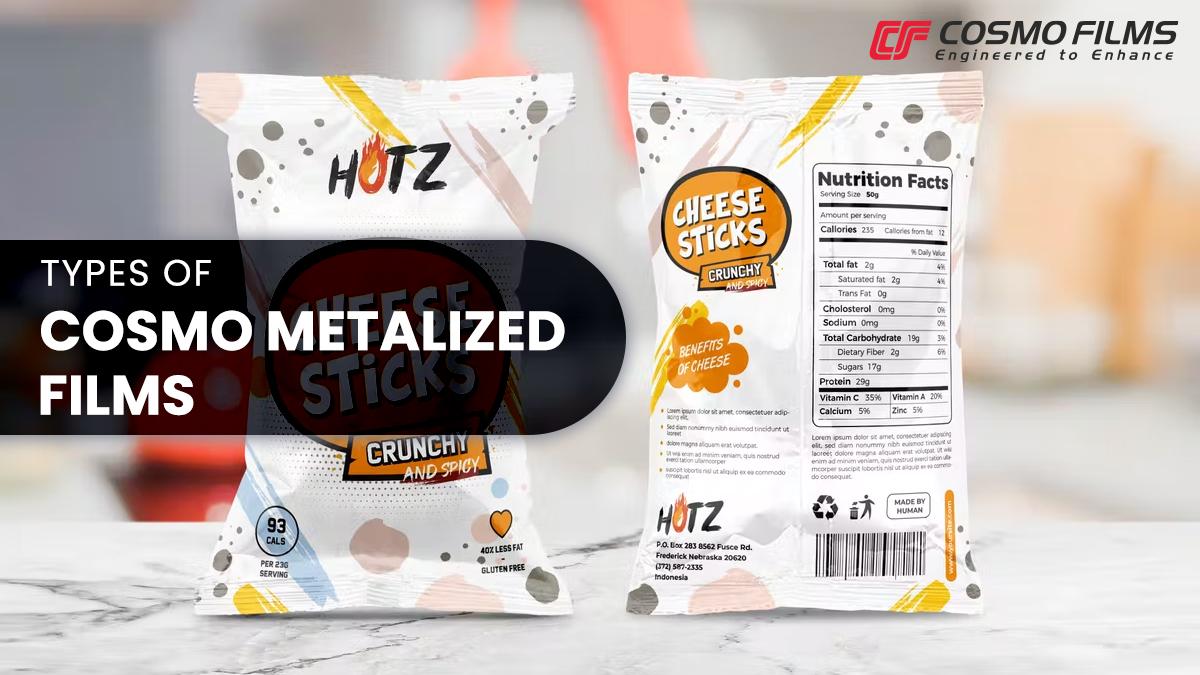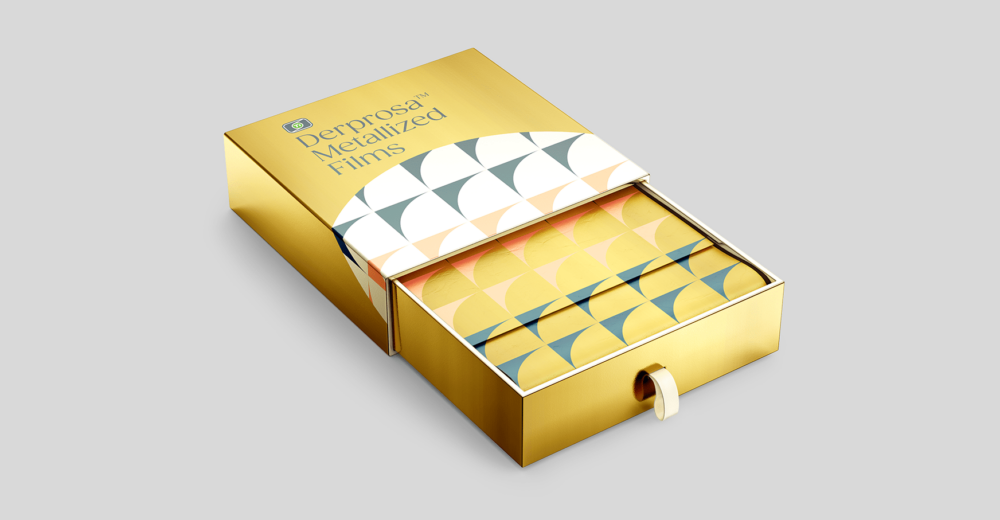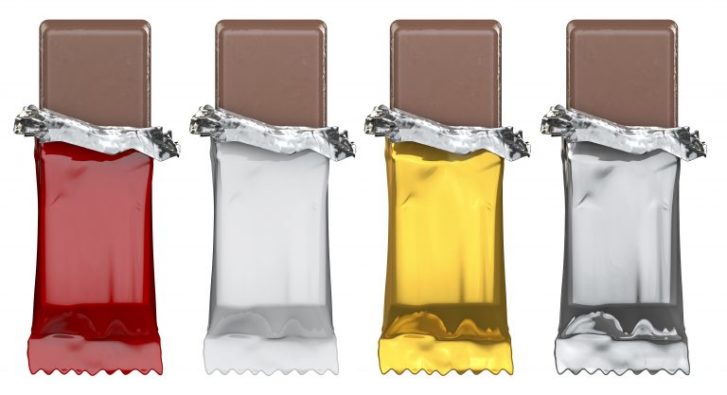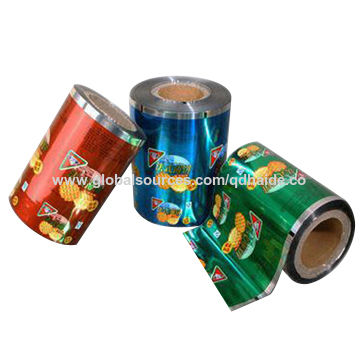Identify Suitable Metalized Films for Safe Food Packaging Lamination: What Are the Key Options and Their Properties?

Metalized films play a crucial role in food packaging lamination. These films are plastic substrates coated with a thin layer of metal, usually aluminum. This metal layer creates a shiny, reflective surface that acts as a barrier to moisture, oxygen, and contaminants. This barrier is essential for protecting food products, extending their shelf life, and maintaining freshness.
Metalized films function by combining the metallic layer’s barrier properties with the flexibility and strength of the plastic film. In lamination, these films are bonded with other materials to form multi-layer laminates offering enhanced protection and visual appeal. The metal layer reflects light and heat, improving thermal insulation and providing a sparkly look that attracts consumers.
Main Types of Metalized Films Used in Food Packaging
Several metalized films are widely used in food packaging lamination. Each type brings unique properties suited to different packaging needs:
| Metalized Film Type | Base Film | Key Properties | Typical Uses |
|---|---|---|---|
| Metalized PET (Polyester) | PET | High mechanical strength, good thermal stability, excellent barrier to gases and moisture | Snack foods, coffee bags, ready meals |
| Metalized OPP (Oriented Polypropylene) | OPP | High clarity, stiffness, moisture barrier, good machinability | Bakery packaging, confectionery |
| Metalized Polypropylene (PP) | PP | High tensile strength, moisture and chemical resistance, heat sealable | Snack food bags, pharmaceutical labels |
| Metalized Polyethylene (PE) | PE | Cost-effective moisture barrier, flexible, heat sealable | Outer laminates in multilayer pouches |
| Metalized Cavitated White Opaque Film | OPP/PET composite | Bright white background, good printability, opaque | Premium snack packaging, brand differentiation |
Each type delivers specific benefits depending on the food product and packaging machinery used. For example, metalized PET offers strong protection for products sensitive to oxygen, while metalized OPP provides a glossy finish at a lower cost.
Barrier Properties: How Metalized Films Protect Food
The main reason to use metalized films is their excellent barrier properties. These properties shield the food from moisture, oxygen, oils, odors, and external contaminants. This helps maintain freshness and prevent spoilage.
- Moisture Barrier: Metalized layers block water vapor, which is critical to prevent sogginess or drying out.
- Oxygen Barrier: Oxygen exposure causes oxidation, leading to rancidity and nutrient loss. Metalized films reduce oxygen transmission rate (OTR).
- Light Barrier: Reflective surfaces reduce exposure to UV and visible light, preventing color fading and nutrient degradation.
- Contaminant Protection: Films block dust, bacteria, and insects, maintaining hygiene throughout the product’s shelf life.
This barrier effect results in longer shelf life, less food waste, and improved consumer safety. For example, metalized films in snack packaging help keep chips crispy by blocking moisture and oxygen.
Safety Certifications and Regulatory Compliances for Metalized Films
When choosing metalized films for food packaging lamination, safety is paramount. Films must comply with global and local food contact regulations to ensure no harmful substances migrate into food.
Key certifications and regulations to check include:
- FDA (U.S. Food and Drug Administration): Ensures food-contact materials meet safe substance migration limits.
- EFSA (European Food Safety Authority): Governs materials used in EU food packaging with strict migration thresholds.
- BIS (Bureau of Indian Standards): India’s standard marking that confirms compliance with safety and quality norms.
- ISO 22000 / HACCP certifications: Reflect safe manufacturing practices across the supply chain.
- Solvent-Free Coatings: Avoid solvents to reduce chemical migration risks.
- Oxo-Biodegradable Certifications: For films that break down safely, supporting eco-friendly packaging mandates.
Before use, metalized films should undergo migration testing and chemical analysis to verify food safety compliance. Traceability documents and certificates from suppliers are essential for regulatory audits and confidence.
Metalized Films vs. Non-Metalized Laminates in Food Safety and Performance
Metalized films outperform non-metalized laminates in several ways when it comes to food packaging:
| Feature | Metalized Films | Non-Metalized Laminates |
|---|---|---|
| Barrier Protection | Superior against moisture, oxygen, light | Moderate, depends on film type |
| Shelf Life Extension | Significant due to barrier qualities | Limited by permeability |
| Heat Sealability | Enhanced with proper coatings | Variable, usually good |
| Visual Appeal | Reflective metallic finish | Matte or glossy, less striking |
| Cost | Higher due to metal coating | Generally lower |
| Recycling Challenges | More complex due to metal layer | Easier if single-material |
Metalized films effectively prevent spoilage and contamination better than most plastic films. Their reflective, shiny surface also enhances shelf appeal, making packaged foods more attractive.
Advantages and Limitations of Different Metalized Films in Food Packaging Lamination
Choosing the right metalized film depends on balancing these factors:
- Metalized PET:
- Advantages: Strong barrier, heat resistance, printability
- Limitations: Higher cost, less flexible
- Metalized OPP:
- Advantages: Low cost, good clarity, good machinability
- Limitations: Moderate barrier compared to PET
- Metalized Polypropylene:
- Advantages: High tensile strength, moisture barrier, heat sealable
- Limitations: Lower oxygen barrier than PET
- Metalized Cavitated Films:
- Advantages: Bright white print background, premium look
- Limitations: Slightly lower barrier, may need co-extrusion
- Oxo-Biodegradable Metalized Films:
- Advantages: Environmentally friendly, regulatory compliant
- Limitations: Limited availability, cost premium
Understanding these helps manufacturers match film properties to product needs — for example, PET for coffee bags needing great oxygen barrier, and OPP for bakery packaging favoring cost and clarity.
Interaction of Lamination Processes with Metalized Films and Compatibility Factors
The lamination process bonds metalized films with other layers using adhesives or heat sealing to form robust multi-layer structures. This step is critical for preserving barrier properties and ensuring food safety.
Important compatibility points include:
- Adhesive Selection: Must bond well with metalized surfaces without compromising barriers or safety.
- Heat Seal Conditions: Temperature and pressure need proper control to avoid damaging the metallic layer or the base film.
- Layer Ordering: Metalized films are often the inner layer facing food to prevent scratches or contamination.
- Machine Compatibility: Films must work smoothly with VFFS (vertical form-fill-seal) and HFFS (horizontal form-fill-seal) machines common in snack packaging.
- Solvent-Free Coating Processes: Avoid solvents which can contaminate food; solvent-free coatings also improve lamination strength.
Proper lamination preserves the barrier qualities of metalized films and maintains food safety by preventing leaks and contamination paths.
Metalized films serve as a versatile, high-performance choice in food packaging lamination. Understanding their types, barrier properties, safety certifications, advantages, and lamination compatibility enables packaging designers to identify suitable metalized films for safe food packaging lamination that meet both industry and regulatory demands while appealing to consumers.
What Are the Regulatory and Safety Considerations for Using Metalized Films in Food Packaging Lamination?

When you identify suitable metalized films for safe food packaging lamination, understanding metalized film safety and relevant regulatory standards for packaging films is key. These rules ensure the films protect food without contaminating it or harming consumers. Let’s explore the global and Indian regulations, food safety testing, compliance with authorities like FDA and EFSA, and how sustainability and traceability fit in.
Which Global and Indian Regulations Govern the Use of Metalized Films in Food Packaging Lamination?
The use of metalized films in food packaging must align with strict regulations worldwide to guarantee safety.
| Region | Applicable Regulation | Description |
|---|---|---|
| United States | FDA 21 CFR Part 177 (Indirect Food Additives) | Governs materials that contact food, including metalized films, setting migration limits. |
| European Union | Regulation (EC) No 1935/2004 & EU 10/2011 | Sets rules on materials contacting food, specifying testing and authorized substances. |
| India | Bureau of Indian Standards (BIS) IS 15495:2019 | Specifies safety requirements for food contact materials, including metallic laminated films. |
In India, the Bureau of Indian Standards (BIS) offers one of the main frameworks. It covers testing methods and permissible limits for contaminants migrating from packaging into food.
Globally, the FDA and the European Food Safety Authority (EFSA) impose strict standards on food contact compliance, requiring materials to not transfer harmful substances and preserve food quality.
What Food Safety and Migration Testing Standards Must Metalized Films Meet Before Use?
Before metalized films enter production lines, they undergo rigorous testing to meet safety standards:
- Migration Testing: This checks if substances from the metalized film migrate into food. Limits are strict; total migration generally must stay below 10 mg/dm². Testing uses simulants like ethanol or acetic acid to replicate food types.
- Specific Migration Limits (SMLs): Regulate individual substances such as aluminum or solvents to ensure no toxic transfer.
- Overall Migration Limits: Define the maximum total amount of substances transferring from film to food.
- Sensory Tests: Confirm that packaging does not change food taste or odor.
- Mechanical and Thermal Testing: Verify that films hold up to heat sealing and machinery during lamination without releasing harmful chemicals.
Metalized films must pass tests based on ISO 22000 or related national standards before approval.
How Do Metalized Films Ensure Compliance with FDA, EFSA, and BIS Food Contact Material Standards?
Metalized films used in food packaging are designed with compliance in mind. To meet FDA, EFSA, and BIS standards, manufacturers:
- Use approved raw materials with known safety profiles.
- Apply controlled coating technologies that avoid harmful solvents or contaminants.
- Conduct batch-wise testing for migration limits to certify food contact safety.
- Maintain detailed documentation and certificates of analysis (CoA) for traceability.
- Employ validated lamination processes that do not degrade the film or release toxic substances.
For example, the FDA requires films to comply with 21 CFR 177.1520, which regulates polyethylene films with metal coatings, specifying no harmful contaminants.
In the EU, compliance with Regulation EU 10/2011 means metalized films have exhaustive authorizations and continuous safety monitoring.
Indian BIS standards harmonize with these global regulations but focus on consumer protection tailored to local food products and packaging practices.
What Role Do Solvent-Free Coating Processes and Oxo-Biodegradable Options Play in Regulatory Compliance and Sustainability?
Among the latest trends, solvent-free coating on metalized films greatly impacts safety and environmental footprint:
- Solvent-Free Coatings avoid volatile organic compounds (VOCs) that can pose hazards or migrate into food.
- These coatings enhance lamination efficiency and produce fewer emissions during processing.
- They help meet stricter environmental regulations, especially in jurisdictions pushing green packaging.
Oxo-biodegradable metalized films add sustainability benefits:
- They degrade under oxygen exposure after disposal, reducing plastic waste accumulation.
- Products like Metalized Oxo-Biodegradable Heat Sealable Film combine food safety with eco-friendly features.
- Use of such films aligns with increasing government mandates for sustainability, especially in India’s fast-growing packaging market.
However, oxo-biodegradable films must also be verified for migration compliance and mechanical stability before approval.
How Can Manufacturers Verify the Traceability and Documentation of Metalized Films Used in Food Packaging?
Traceability for metalized films is vital for safety audits and regulatory inspections. Manufacturers should:
- Maintain detailed batch records documenting raw materials, coating methods, and quality tests.
- Use barcode or RFID tracking for easy identification along the supply chain.
- Demand third-party certification confirming compliance with safety standards.
- Keep Certificates of Compliance (CoC) and Certificates of Analysis (CoA) for each film batch.
- Employ digital systems for documentation to avoid errors and facilitate quick retrieval during recalls.
Such practices assure clients and regulators that each metalized film roll meets food package safety standards before use.
What Are the Potential Risks if Unsafe or Non-Compliant Metalized Films Are Used in Food Packaging Lamination?
Using unapproved or non-compliant metalized films can pose serious risks:
- Chemical Migration: Harmful substances can leach into food, causing health problems such as toxicity or allergies.
- Microbial Contamination: Poor barrier films allow moisture or oxygen ingress, promoting food spoilage or pathogen growth.
- Legal Consequences: Non-compliance with FDA, EFSA, or BIS leads to fines, recalls, or bans on products.
- Brand Damage: Consumer trust collapses if packaging safety is questioned.
- Food Waste: Ineffective barriers shorten shelf life, resulting in discarded products.
A notable case involved snack foods packaged with non-compliant metalized films that leaked aluminum beyond SML, prompting a major product recall and loss of market share.
As your guide, I stress that identifying suitable metalized films for safe food packaging lamination means prioritizing compliance, testing, and traceability above all else, to safeguard food quality and consumer health.
This extended focus ensures your packaging meets metalized film regulations globally and in India, blending safety with sustainability, and building solid foundations for your food packaging success.
How to Select and Apply Metalized Films for Effective, Safe Food Packaging Lamination?

Choosing and using metalized films for food packaging lamination takes careful thought. These films protect food from moisture, oxygen, and spoilage while adding a shiny, appealing look. Here, I share my expert tips on selecting the right metalized film and applying it properly for safe, strong packaging.
Criteria for Choosing Metalized Films for Food Packaging
When selecting metalized films, start with these key points:
- Barrier protection: Look for films that offer strong defense against oxygen and moisture. Metalized PET and metalized polypropylene often excel here.
- Food safety compliance: Verify if the film meets FDA and BIS standards for food contact. Solvent-free coatings are often safer.
- Compatibility with product type: Think about what you are packaging. Snacks need moisture barriers; beverages may need UV protection.
- Lamination capability: Films like Metalized Barrier Films perform well in duplex or triplex laminates.
- Mechanical strength: Films must withstand handling and machine runs without cracking. Examples include polypropylene-based films.
- Aesthetic finish: Shiny metallic surfaces like aluminum metallized films improve shelf appeal.
- Sustainability: Consider options like oxo-biodegradable metalized films for eco-friendly packaging.
Using a checklist like this can help you choose the best fit for your food product's needs.
Matching Metalized Films With Lamination Technologies and Equipment
Not all metalized films work well with every lamination machine. For example:
- Vertical Form-Fill-Seal (VFFS) machines: Films used here must have heat sealability and good machinability because the film forms pouches on the run. Many snack packagers use metalized OPP or metalized BOPP films here.
- Duplex and triplex laminators: Solvent-free coated metalized films work well as inner webs to bond reliably without adhesives that might compromise safety.
- Label application: Metalized PSL and wrap-around label films are designed to print well and work with typical label applicators, including reel-fed and cut-stock systems.
Always match the metalized film type to your machine specs and the lamination process to avoid wrinkles, seal failures, or jams.
Best Practices for Laminating Metalized Films to Ensure Safety and Barrier Integrity
Maintaining barrier properties is key during lamination. Follow these tips:
- Use solvent-free coatings: They reduce contamination risk and improve food safety.
- Control lamination temperature and pressure: Overheating can damage the metal layer; under-heating may weaken bonds.
- Opt for multilayer structures: Combining metalized films with white opaque or biodegradable layers adds strength and barrier performance.
- Avoid unnecessary perforations: Even small pinholes degrade oxygen and moisture barriers.
- Ensure uniform adhesive application: This maintains film integrity and improves seal strength without bleeding through.
By following these food packaging lamination best practices, you preserve freshness and safety.
How Multilayer Laminates With Metalized Films Improve Shelf Life and Durability
Using metalized films within multilayer laminates offers huge benefits for food packaging:
| Benefit | Description |
|---|---|
| Oxygen/moisture barriers | Metalized layers limit spoilage and moisture ingress. |
| Mechanical protection | Outer polymer layers add tear and impact resistance. |
| Heat sealability | Specific film combinations allow tight, contamination-proof seals. |
| Printability | Outer layers designed for sharp, durable printing. |
| Sustainability | Oxo-biodegradable layers degrade more easily post-use. |
A typical structure might be a metalized film as the inner barrier, laminated to a white opaque cavitated film for brightness and print contrast, finalized with a heat sealable outer layer.
Printing Options Compatible With Metalized Films in Food Packaging
Printing on metalized films requires careful selection for sharp, fast-drying graphics:
- Flexography: Works well on polypropylene metalized films for color durability.
- UV printing: Offers vibrant colors and good adhesion on metalized PET.
- Letterpress and offset: Used especially on metalized PSL films to produce detailed labels.
- Water-based and solvent inks: Compatible with many metalized films, but test adhesion and drying time.
A shiny metal layer also enhances print contrast, making brand visuals pop on shelves.
Case Studies: Successful Metalized Film Applications in Different Food Packaging
- Snack packaging: Leading Indian brands use metalized OPP films with VFFS machines. The films deliver airtight seals and a glossy look that attracts shoppers.
- Bakery products: Metalized cavitated white opaque films laminated for freshness and striking printability, maintaining softness and protecting from moisture.
- Beverage labels: Metalized wrap around films based on BOPP provide heat sealability and mold resistance, ideal for slender bottle shapes.
- Pharmaceutical packaging: Metalized PSL films with universal printability secure sensitive pills from light and moisture.
These examples show how metalized film application adapts to different sectors for safe, attractive food packaging.
Troubleshooting Common Lamination Challenges With Metalized Films
Even experts face issues. Here’s how to fix common problems:
| Challenge | Cause | Solution |
|---|---|---|
| Poor seal strength | Incompatible heat seal layer or temp too high | Adjust temperature and use compatible sealing layers |
| Film wrinkling | Excess tension on film | Reduce tension, optimize unwind settings |
| Adhesive bleed-through | Excessive adhesive or wrong adhesive type | Use solvent-free, food-safe adhesives in correct amounts |
| Print smudging | Improper ink or drying process | Switch to UV or flexo inks with faster curing |
| Metal coating damage | Mechanical stress or overheating | Lower lamination temp and handle film gently |
By monitoring equipment settings and selecting tailored metalized films, you can avoid these issues.
Using the right metalized films and applying them carefully protects food quality and makes packaging stand out. Follow these expert guidelines to achieve safe, durable, and eye-catching food packaging lamination.
Additional Table on Metalized Film Properties and Applications
| Metalized Film Type | Barrier Strength | Flexibility | Heat Sealability | Typical Food Application | Sustainability Aspect |
|---|---|---|---|---|---|
| Metalized PET | High | Medium | Medium | Coffee bags, Ready meals | Moderate |
| Metalized OPP | Medium | High | Good | Bakery packaging, Confectionery | Moderate |
| Metalized Polypropylene (PP) | Medium-High | Medium | High | Snack bags, Pharma labels | Moderate |
| Metalized Cavitated Films | Medium | Medium | Variable | Premium snack packaging | Moderate |
| Oxo-Biodegradable Metalized Films | Medium | Medium | Medium | Eco-friendly packaging | High (biodegradable) |
The above image shows typical packaging films used in lamination with metalized films to achieve multilayer food packaging structures.
[End of blog with images and tables inserted accordingly.]
FAQs about Identify suitable metalized films for safe food packaging lamination:
What types of metalized films are commonly used for food packaging lamination?
The types of metalized films commonly used for food packaging lamination include metalized PET, metalized OPP, metalized polypropylene, metalized polyethylene, and metalized cavitated white opaque films, each offering unique barrier properties and applications suited to various food products.
How do metalized films protect food products in packaging lamination?
Metalized films protect food products by providing excellent moisture, oxygen, light, and contaminant barriers, which maintain food freshness, prevent spoilage, extend shelf life, and preserve product quality.
What regulatory and safety standards must metalized films meet for food packaging?
Metalized films must meet key regulatory and safety standards such as FDA regulations in the U.S., EFSA rules in the EU, and BIS standards in India, ensuring they do not migrate harmful substances into food and comply with migration and safety testing.
How does one select the right metalized film for safe food packaging lamination?
Selecting the right metalized film involves evaluating barrier performance, food safety compliance, compatibility with the packaging product and lamination process, mechanical strength, aesthetic requirements, and environmental considerations like solvent-free coatings and oxo-biodegradability.
What are the risks of using non-compliant or unsafe metalized films in food packaging?
Using non-compliant metalized films risks chemical migration into food,
We covered what metalized films are and their key types, like metalized PET and OPP. I explained how these films protect food by blocking moisture and oxygen. We also looked at safety rules from FDA and EFSA, plus tips to pick the right film for your needs. Using metalized films right helps keep food fresh and safe. If you follow these practices, your packaging will work well and meet all safety standards. Choosing the proper metalized film means safer food and longer shelf life.


